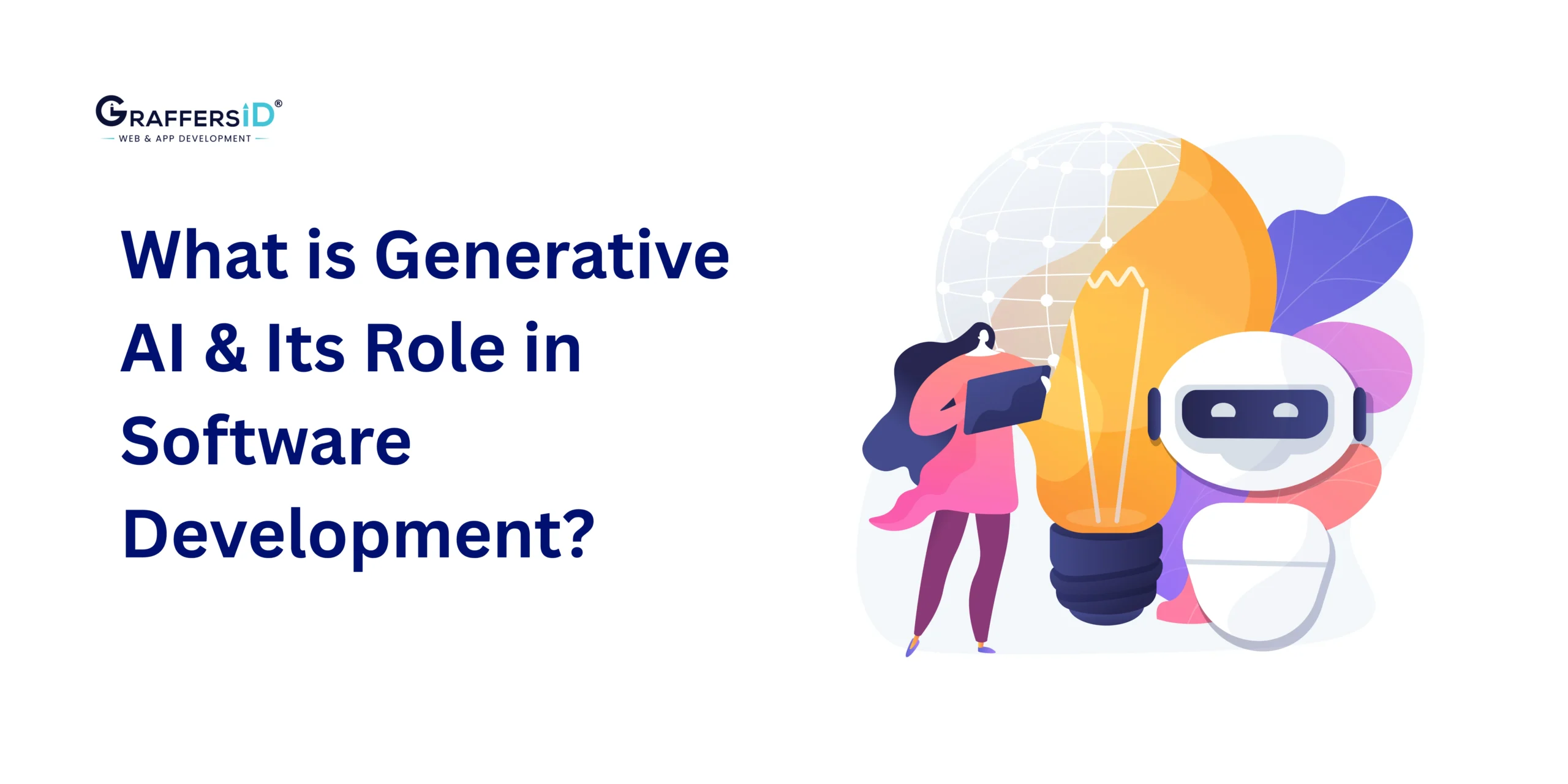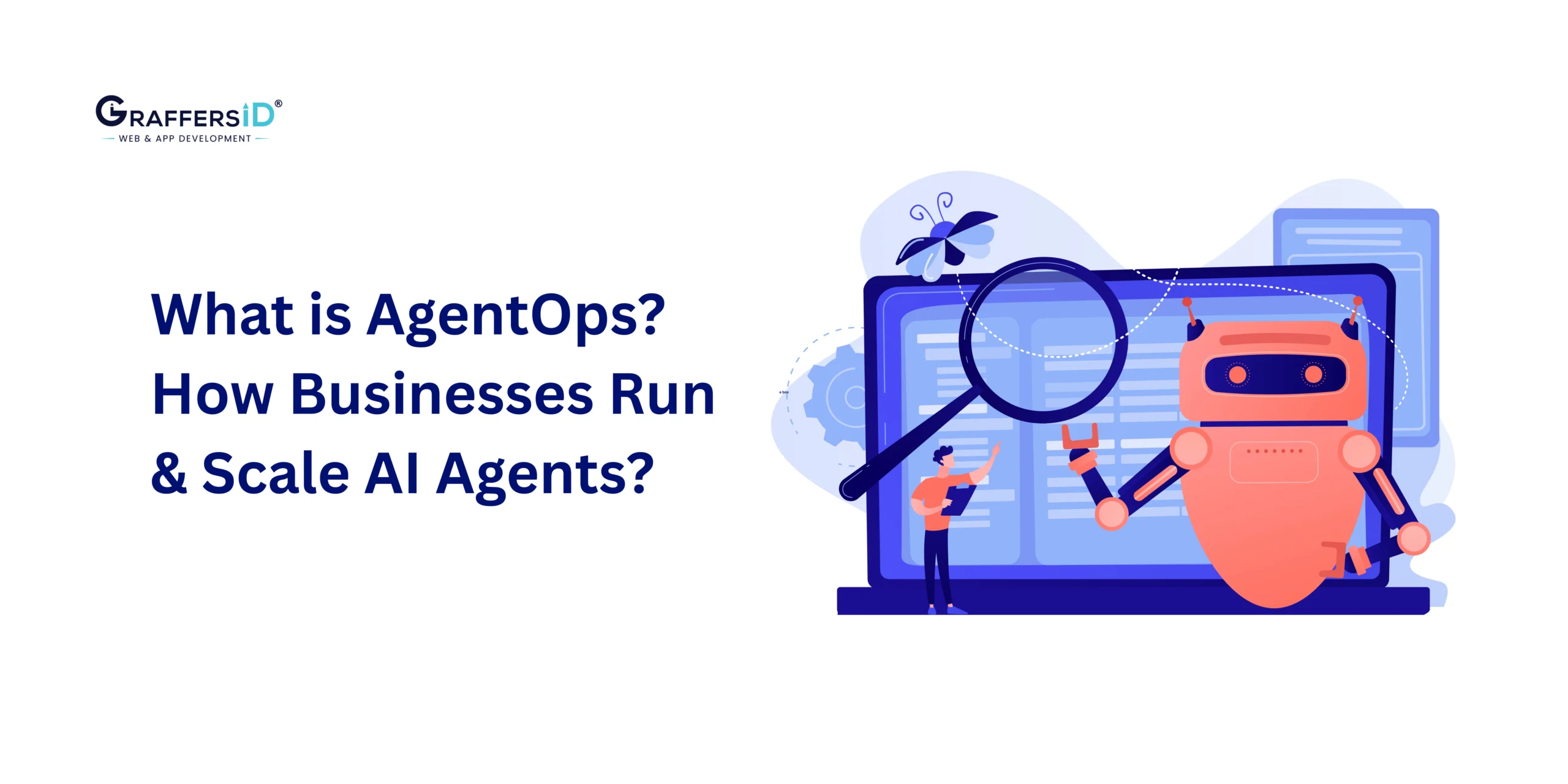In 2026, Generative AI isn’t just a buzzword; it’s the backbone of modern software development. From writing clean, production-ready code to creating intelligent user interfaces and automating DevOps pipelines, generative AI is transforming how digital products are imagined, built, and scaled.
This shift marks a new era where AI doesn’t just assist developers; it collaborates with them. Companies leveraging generative AI are shipping products faster, cutting operational costs, and unlocking levels of innovation that were impossible a few years ago.
But what exactly is generative AI, how does it work, and why is it becoming essential for software teams worldwide? Let’s dive deep into how this technology is redefining software development in 2026 and what it means for the future of your business.
What is Generative AI?
Generative AI refers to artificial intelligence models capable of creating new content, text, images, code, designs, and more, rather than simply analyzing or predicting.
Unlike traditional rule-based AI, generative AI uses deep learning, transformers, and large language models (LLMs) trained on vast datasets to produce contextually relevant, human-like outputs.
Core Technologies Behind Generative AI
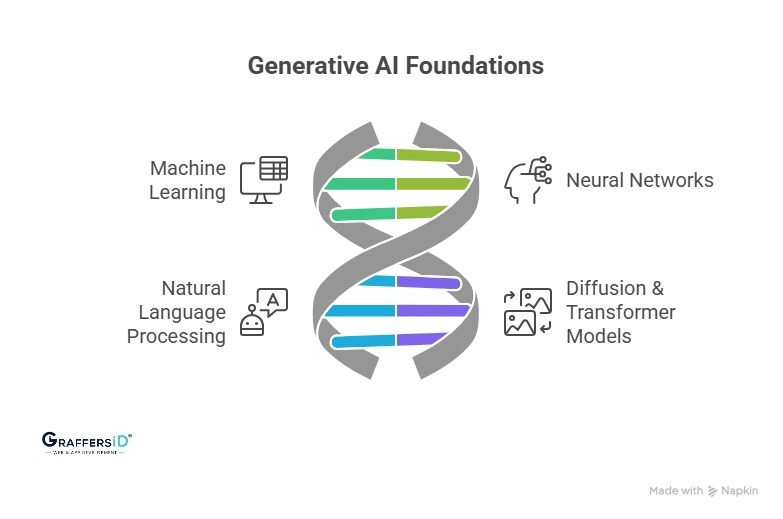
-
Machine Learning (ML): Teaches models to identify data patterns and generate predictive outcomes.
-
Neural Networks: Mimic human cognition to process, adapt, and generate complex outputs.
-
Natural Language Processing (NLP): Enables understanding and creation of human-like text and dialogue.
-
Diffusion & Transformer Models: Power high-quality image, text, and multimedia generation.
Popular examples include OpenAI’s GPT-5, DALL·E 3, Midjourney, and GitHub Copilot, all of which are shaping next-gen software development workflows.
How Generative AI is Transforming Software Development in 2026?
Generative AI is now embedded into every stage of the Software Development Lifecycle (SDLC), from design to deployment. Here’s how it’s redefining modern engineering teams.
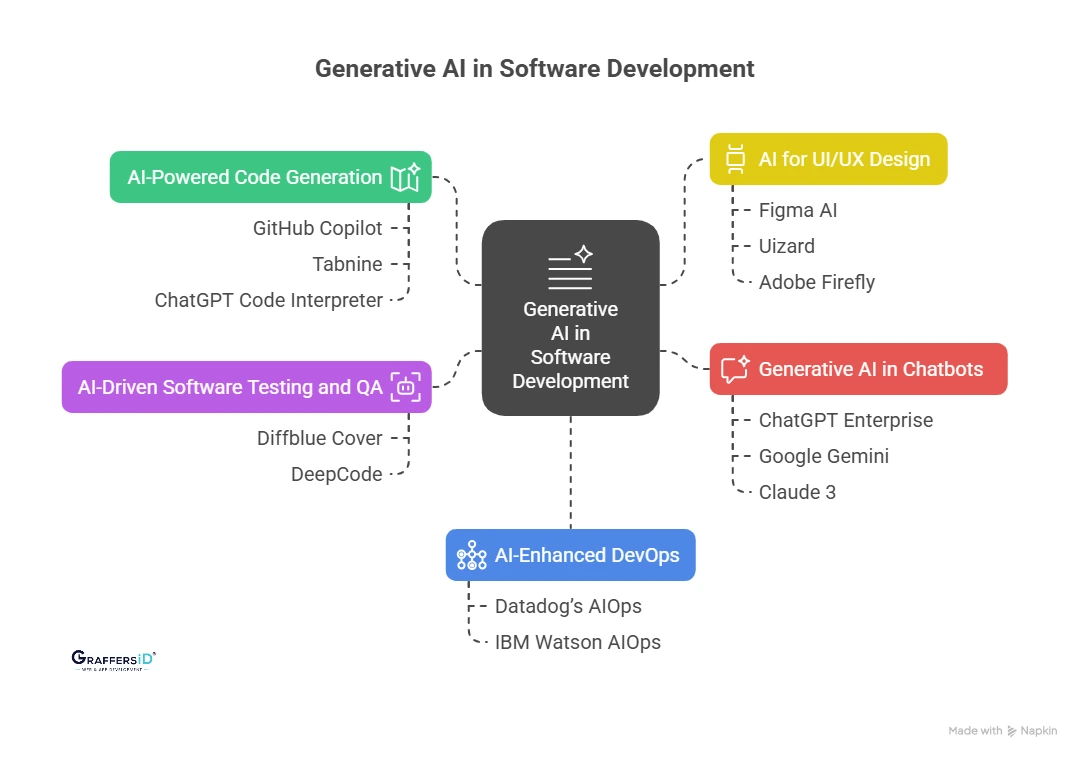
1. AI-Powered Code Generation
Generative AI tools such as GitHub Copilot, Tabnine, and ChatGPT Code Interpreter are now trusted coding companions. They assist developers by suggesting functions, completing code blocks, and even explaining complex algorithms in natural language.
Benefits
- Accelerates development speed: Automates repetitive coding tasks.
- Boosts productivity: Provides real-time intelligent suggestions.
- Enhances learning: Junior developers gain from AI-guided best practices.
Challenges
- Code validation: AI-generated code may include security vulnerabilities or inefficiencies.
- Human oversight needed: Developers must review and optimize all outputs before production.
Read More: How to Build Generative AI Solutions That Actually Work and Drive Business Value in 2026?
2. AI-Driven Software Testing and Quality Assurance
In 2026, AI-powered testing tools like Diffblue Cover and DeepCode are transforming Quality Assurance. They automatically generate unit, regression, and UI test cases while identifying and fixing bugs in real time.
Impact on QA
-
Auto-generation of test scripts and regression suites.
-
Predictive bug detection and automated resolution.
-
Improved software reliability and reduced time-to-market.
By integrating Generative AI in QA, teams can maintain agility while achieving higher software quality standards.
3. AI for UI/UX Design
Generative AI isn’t limited to backend tasks; it’s revolutionizing frontend design too. Platforms like Figma AI, Uizard, and Adobe Firefly enable rapid design prototyping and adaptive UX creation.
How AI Enhances UX?
-
Auto-generates responsive layouts and wireframes from prompts.
-
Predicts user behavior and suggests optimal design improvements.
-
Automates A/B testing for real-time UX optimization.
With these tools, product teams can build intuitive, data-driven, and visually engaging experiences faster than ever.
4. AI-Enhanced DevOps: Automating CI/CD
Generative AI is transforming DevOps by integrating predictive intelligence into CI/CD workflows, infrastructure management, and performance monitoring.
Key Advancements in AIOps
-
Predictive issue resolution: AI forecasts system failures and recommends fixes.
-
Intelligent log analysis: Automatically identifies performance bottlenecks.
-
Adaptive monitoring: Detects security anomalies and optimizes uptime.
Tools like Datadog’s AIOps and IBM Watson AIOps use generative models to ensure continuous delivery and zero-downtime operations.
Read More: Agentic AI vs. Generative AI: Key Differences CTOs Must Know in 2026
5. Generative AI in Chatbots and Virtual Assistants
Generative AI powers enterprise-grade chatbots and assistants that provide real-time, human-like support. These tools are redefining customer interaction and operational efficiency.
Examples of AI-Powered Chatbots
-
ChatGPT Enterprise, Google Gemini, and Claude 3 for contextual support.
-
AI-driven helpdesk automation for SaaS platforms.
-
Voice-based assistants are integrated into business workflows.
By adopting AI-powered conversational interfaces, businesses can reduce support costs and enhance user satisfaction while scaling 24/7 service.
Read More: Top 10 Generative AI Trends in 2026: How Enterprises Are Transforming With AI?
Future of Generative AI in Software Development (2026 & Beyond)
The next phase of software innovation will be AI-augmented development, where human creativity and AI automation co-exist to deliver high-value outcomes.
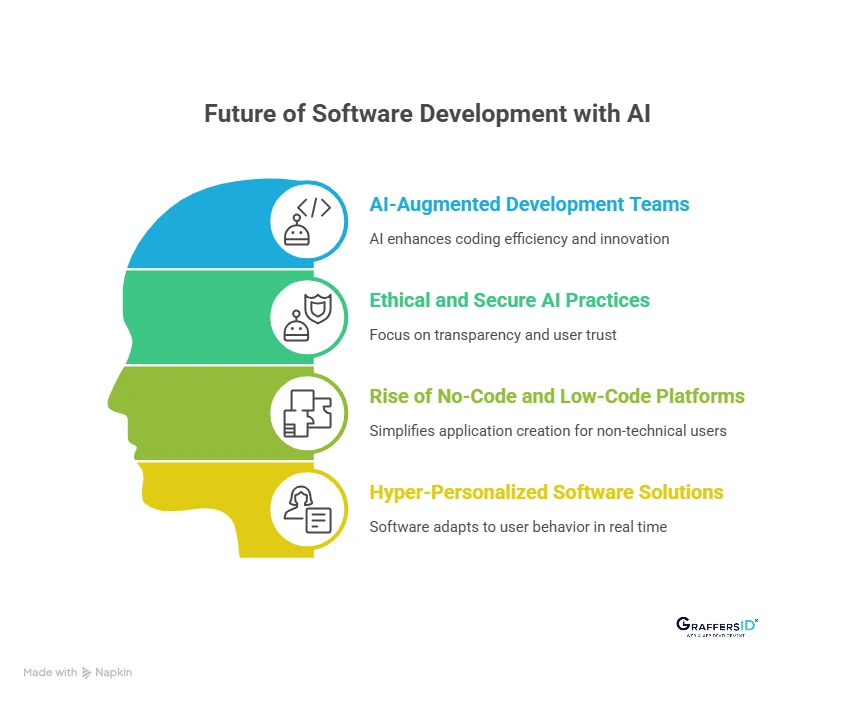
1. AI-Augmented Development Teams
Generative AI will act as an intelligent co-developer, automating repetitive coding, improving accuracy, and allowing engineers to focus on strategy, architecture, and innovation.
2. Ethical and Secure AI Practices
Enterprises will prioritize building transparent, explainable, and compliant AI systems that ensure data security, reduce bias, and maintain user trust.
3. Rise of No-Code and Low-Code Platforms
AI-powered no-code tools will enable non-technical teams to create applications effortlessly, driving faster digital transformation and reducing development bottlenecks.
4. Hyper-Personalized Software Solutions
Future software will adapt in real time to user behavior, as generative AI enables hyper-personalization and dynamic user experiences across enterprise systems.
Conclusion: Generative AI Powering the Next Wave of Software Innovation
In 2026, Generative AI has evolved from an emerging innovation to a core pillar of modern software engineering. It’s reshaping every stage of the Software Development Lifecycle (SDLC), from automated coding and intelligent testing to AI-driven design and DevOps optimization.
Organizations embracing AI-assisted workflows are seeing tangible outcomes:
- Faster product releases through automated development cycles
- Smarter, more reliable code with AI-powered debugging
- Enhanced UX driven by predictive and personalized design
- Reduced operational costs and improved scalability
Generative AI doesn’t replace developers; it amplifies their creativity and accelerates innovation. For tech leaders, adopting generative AI is no longer optional; it’s the competitive edge that defines future-ready enterprises.
At GraffersID, we help companies harness this power with AI-driven software development, intelligent automation, and remote AI developers ready to integrate seamlessly into your team.
Hire top AI developers from GraffersID and build cutting-edge, scalable, and future-proof solutions that keep your business ahead in the AI era.
